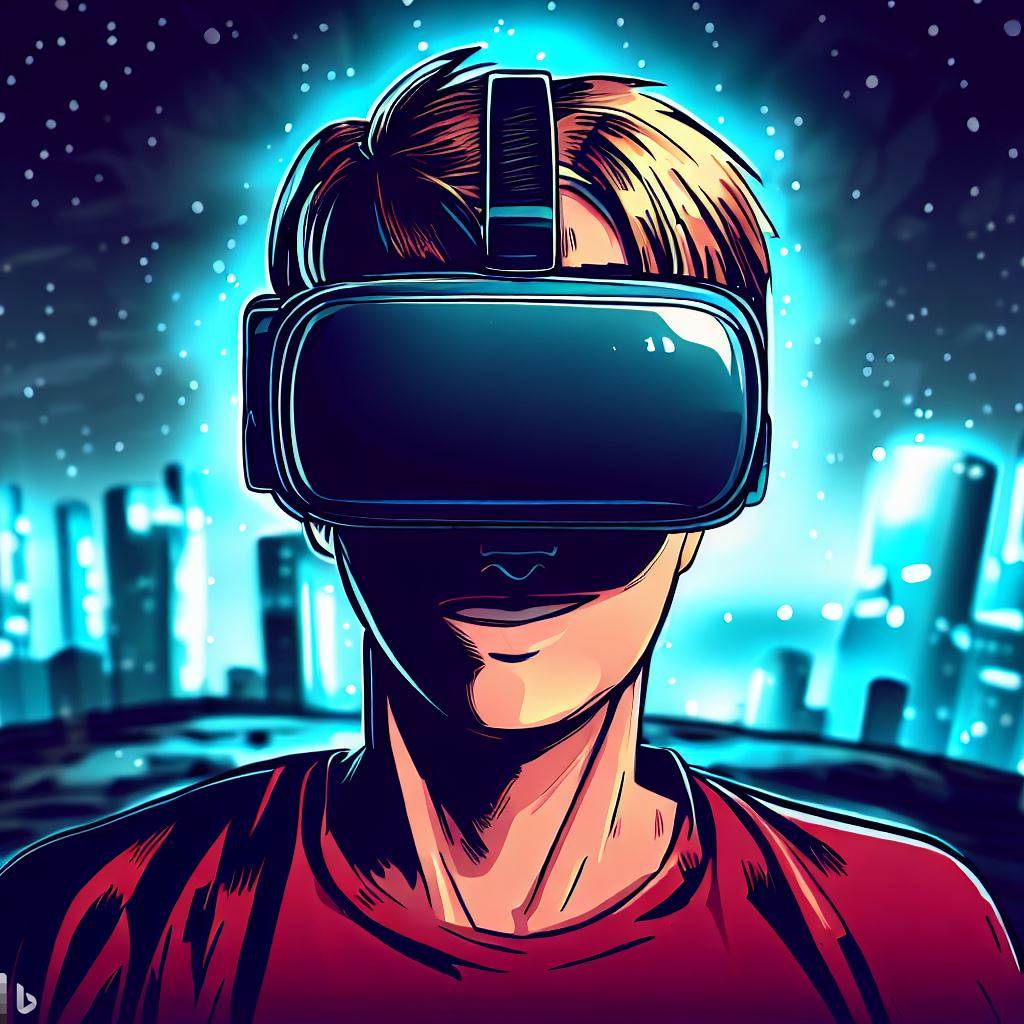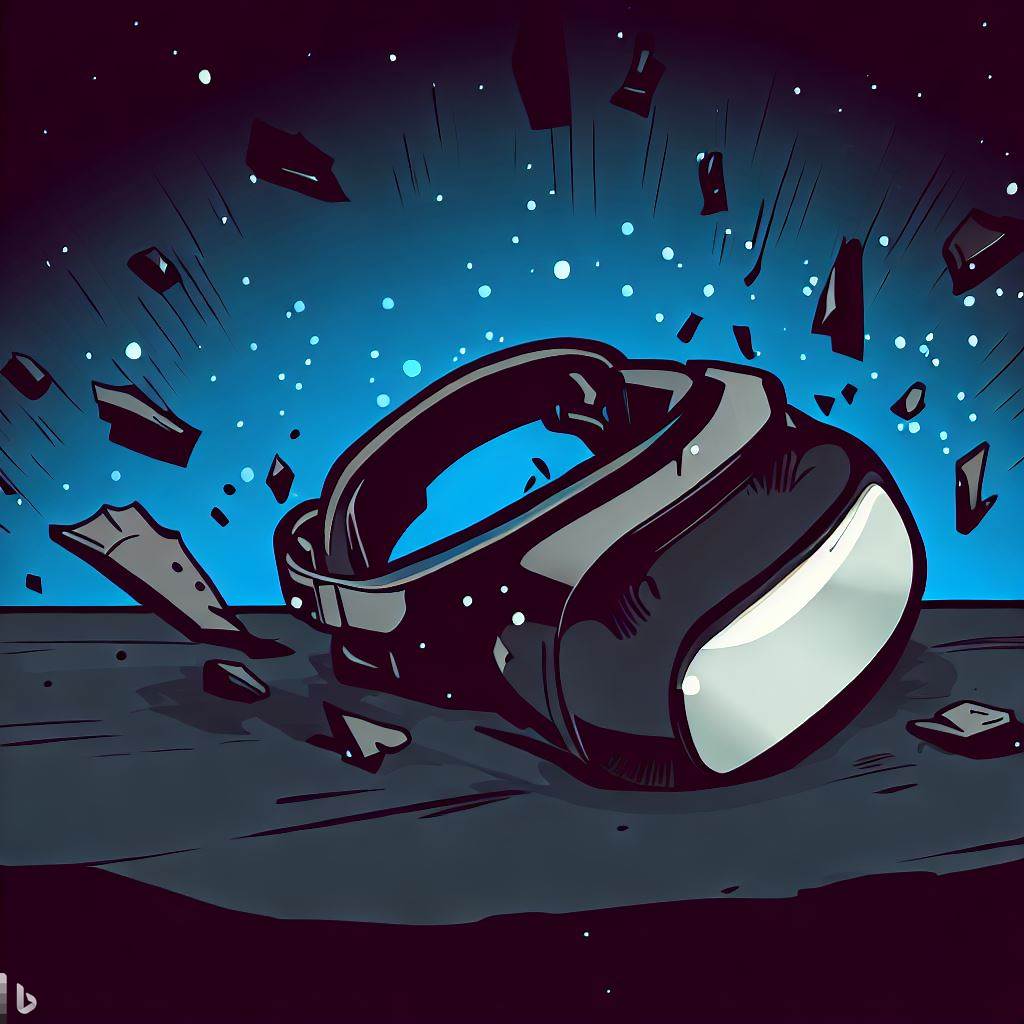VR is unlikely to fail, and the future is bright as the industry pushes the boundaries of innovation, collaboration, and meaningful experiences. By overcoming challenges, VR holds great promise for transforming numerous aspects of our lives and revolutionizing various industries.
Today, we’re diving headfirst into the oh-so-controversial debate: Will Virtual Reality Fail?
Now, before we dive deep into the rabbit hole (no Matrix pun intended), let’s get one thing straight – I’m just a humble writer with an insatiable curiosity, not a fortune teller. So, as we discuss the fate of VR, remember that opinions may vary, and the future is never set in stone.
First off, what is virtual reality? No, I’m not talking about the alternate universe where you never put on those extra 10 pounds over the holidays. Virtual reality, or VR for short, is a computer-generated simulation of a three-dimensional environment that we can interact with using special equipment like headsets, gloves, and sometimes even full-body suits. It’s like diving into a whole new world—Alice in Wonderland, anyone? 🎩
Now that we’re all on the same page let’s dive into the real question: Will Virtual Reality Fail? To answer this burning question, we’ll cover the following:
- The promise of VR: why we’re so hyped up 🚀
- The pitfalls of VR: what’s holding it back 😬
- The final verdict: our educated guess on the future of VR 🤔
Remember, it’s just a debate, so don’t take things too seriously. We’re here to learn and have fun!
The Promise of VR: Why We’re So Hyped Up

The hype around virtual reality is undeniable. From gaming to education, there’s a sense that VR is on the cusp of revolutionizing our lives. But why exactly are we so excited? Let’s break it down.
Immersive Gaming Experiences
VR gaming is the ultimate dream for many gamers. The ability to step inside your favorite game world and interact with it on a whole new level? Sign us up! 🎮 By immersing players in 3D environments, VR gaming offers unparalleled experiences that traditional gaming simply cannot match.
Transformative Education
Imagine learning about history by walking through ancient Rome, or studying marine biology by diving into the depths of the ocean. VR has the potential to revolutionize education by providing immersive, hands-on experiences that enhance learning and retention. 📚
Empathy-Building Tools
Virtual reality can also help us build empathy and understanding by putting us in other people’s shoes. From experiencing the struggles of a refugee to understanding the daily life of someone with a disability, VR opens up a world of possibilities for fostering compassion and awareness. 🌏
Cutting-Edge Medical Applications
From medical training to pain management and even mental health treatment, VR has the potential to reshape healthcare as we know it. By allowing doctors to practice surgeries in virtual environments or patients to undergo exposure therapy, VR could improve medical outcomes and revolutionize the industry. 💉
Remote Work and Collaboration
With more and more people working remotely, VR offers an innovative solution for remote collaboration. Imagine attending meetings in a virtual conference room or collaborating on projects in a 3D environment. Say goodbye to the limitations of video calls! 👩💻
These are just a few reasons why we’re hyped up about the potential of virtual reality. The possibilities seem endless, and the excitement is palpable. But with great promise comes great challenges, and VR is no exception. In the next section, we’ll explore the pitfalls that could hold VR back from reaching its full potential. Stay tuned!
The Pitfalls of VR: What’s Holding It Back

As amazing as the potential of virtual reality may seem, there are still some significant hurdles that need to be overcome before VR can truly change our lives. Let’s delve into some of the key challenges holding VR back:
High Costs and Accessibility
The Problem: VR technology, especially the high-quality headsets and equipment, can be quite pricey. This can be a significant barrier for many people, preventing them from experiencing the wonders of VR.
The Solution: Until the costs come down and VR becomes more accessible, its widespread adoption may remain limited. Manufacturers and developers must focus on making VR more affordable to reach a broader audience. 💸
Technical Limitations
The Problem: While VR technology has come a long way, there are still some technical issues that need to be ironed out. Common problems like latency, motion sickness, and subpar graphics can hinder the overall experience and deter users.
The Solution: Continued innovation and research are essential to address these limitations, making VR truly immersive and enjoyable for everyone. 🕶️
Lack of Content
The Problem: While there are some fantastic VR games and experiences available, the overall content library is still somewhat limited.
The Solution: The development of high-quality, engaging content is crucial for attracting a wider audience and keeping users interested in the long run. Content creators and developers must work together to expand and diversify the VR content ecosystem. 🎨
Social Stigma
The Problem: For some people, the idea of strapping on a headset and immersing themselves in a virtual world can seem odd, nerdy, or even antisocial. This social stigma can prevent VR from gaining mainstream acceptance.
The Solution: Changing societal perceptions will take time, but showcasing the diverse applications of VR beyond gaming, such as education, healthcare, and remote work, can help break down these barriers and foster greater understanding of VR’s potential. 🤝
By addressing these challenges and continuing to innovate, the VR industry can overcome these pitfalls and work towards fulfilling its incredible potential. In the next section, we’ll weigh the pros and cons and share our educated guess on the future of VR.
The Final Verdict: Our Educated Guess on the Future of VR

After examining both the promise and pitfalls of virtual reality, it’s time to draw our educated conclusions on what the future might hold for this groundbreaking technology. While we don’t have a crystal ball, we can make some educated predictions based on the current landscape, trends, and advancements in the field.
🚀 The Growing VR Market
Fact: The global VR market is projected to grow at an impressive rate, with some estimates suggesting a market size of over $451.5 billion by 2030.
Our Take: This growth indicates that there’s an increasing demand for VR technology and a strong incentive for companies to invest in the development of better, more affordable VR systems.
📈 Mainstream Adoption
Fact: While VR has gained popularity in recent years, it’s still not quite mainstream. However, as technology improves and prices decrease, we can expect more people to embrace VR.
Our Take: As VR becomes more accessible and diverse in its applications, we predict that mainstream adoption will increase. The key lies in the development of compelling content and experiences that appeal to a broader audience.
🎯 Targeted Applications
Fact: VR has the potential to revolutionize various industries such as healthcare, education, and remote work. As these applications mature, the value of VR will become increasingly apparent.
Our Take: We foresee a future where VR is used in targeted applications to solve specific problems, enhance learning, and enable new experiences. As VR’s potential is further realized in these industries, it will become more deeply integrated into our lives.
💡 Innovation and Collaboration
Fact: Collaboration between tech giants, startups, content creators, and users is essential for VR’s long-term success.
Our Take: As more stakeholders work together to overcome the challenges faced by VR, the technology will continue to advance, opening up new possibilities and experiences. We anticipate that this collaborative spirit will drive VR to reach its full potential.
🔮 The Long-Term Outlook
Fact: The future of VR is uncertain and depends on various factors, such as technological advancements, market demand, and societal acceptance.
Our Take: While it’s impossible to predict the exact trajectory of VR, we believe that the technology holds significant promise. By addressing the current pitfalls and continuing to innovate, the VR industry has a real chance to flourish and reshape our world in exciting ways.
In conclusion, while virtual reality still faces some challenges, we believe that its potential far outweighs the obstacles. With continued innovation, collaboration, and a focus on developing meaningful applications, the future of VR looks bright.
Conclusion
The question “Will Virtual Reality Fail?” is far from a simple one. As we’ve explored the exciting potential and the challenges that VR faces, it’s clear that the technology has the power to reshape numerous aspects of our lives, from gaming and education to healthcare and remote work. However, its success is not guaranteed, as various hurdles like accessibility, technical limitations, and social stigma still need to be addressed.
In the end, the future of VR depends on continued innovation, collaboration, and a commitment to creating meaningful, immersive experiences that appeal to a wide range of users. While we can’t predict the exact path VR will take, one thing is certain: the potential is enormous, and the journey is bound to be an exhilarating one.
So, will virtual reality fail? The answer is far from black and white. But as long as the VR community keeps pushing the boundaries, embracing new ideas, and working together to overcome challenges, the technology has every chance of thriving and transforming our world in ways we can only begin to imagine. The future of VR is an adventure waiting to unfold – and we’re all invited to be a part of it. 🚀🌐




